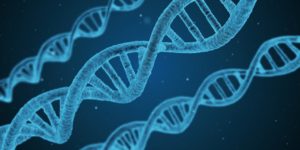Share This Article
Imagine that two genes are located on one chromosome and the distance between them is 1.2% of the total length of the chromosome. The probability that a recombination event will occur at this location is 0.00608, or approximately 50%.

In this post, lets talk about genes and some MCQ’s
A) Genes on the same chromosome are equally likely to recombine with each other.
B) Recombination frequency is inversely proportional to distance between two genes.
C) The probability of a recombination event occurring at any location along a DNA strand is 50%.
D) When chromosomes pair up during meiosis, they will never line up such that one gene comes from one parent and another gene comes from the other parent.
E) All of the above statements are true except for A: Genes on the same chromosome are equally likely to recombine with each other.
The answer is C:
The probability of a recombination event occurring at any location along a DNA strand is 50%.
The amount of recombination frequency between two genes is less than 50% because the total number of possible combinations for those gene sequences are fewer than 100.
There are more than one alleles, and many different versions or copies at a single locus that can be inherited from both parents.
Genetic mutations cannot pass on to future generations if they do not produce any viable offspring in the first place.
Option C:
There are more than one allele and many different versions or copies at a single locus that can be inherited from both parents. This makes it impossible for an individual organism’s genome to include all combinations of these genetic variants during reproduction due to limitations such as time constraints, environmental factors, etc.
Solution:
The answer is The recombination frequency between two genes is always less than 50% because one of the parent chromosomes has an odd number of DNA base pairs.
When a crossover event occurs, it will be at either end of this chromosome. This means that when the chromosome with an even amount of base pairs splits in half there are no crossovers whereas if there was an odd number it would have to go through a phase where both halves had some length and then split again randomly creating a crossover point on each line. This creates more opportunities for the individual to receive traits from their parents (i.e genetic variation) and decreases fitness by increasing the chance that harmful mutations can occur.
